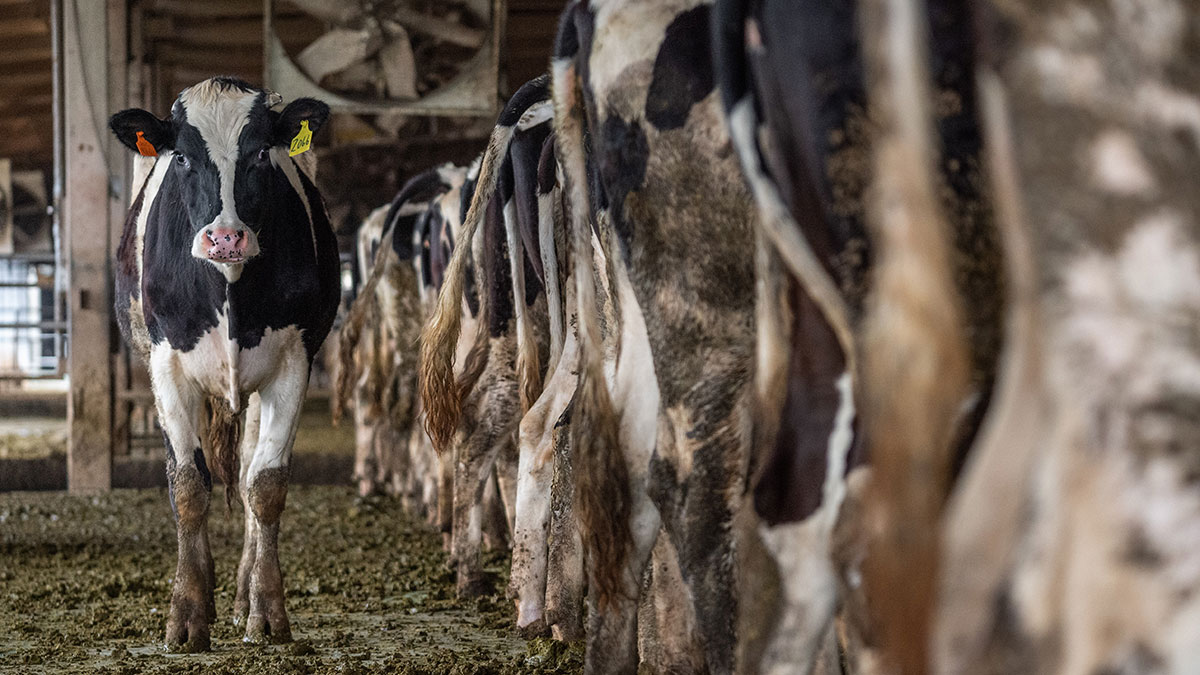The agriculture industry is one of the largest emitters of ammonia, methane, and nitrous oxide. While United States’ animal agriculture has been growing steadily for decades, livestock operations are also getting denser. From 2002 to 2016, the number of concentrated animal feeding operations (CAFOs) has risen by nearly 20% in comparison to just a 6% increase in the number of livestock animals.
For the first time, researchers have been able to match this surge of CAFOs with a dramatic increase in ammonia emissions. These findings, which will be presented on 14 December at AGU’s Fall Meeting 2021, raise health and environmental justice concerns about the effects of the pollutant, according to the researchers.
The team collected animal density records from the U.S. Department of Agriculture (USDA) and the EPA, which showed where CAFOs have operated at the county level since 2002. The researchers focused on density at medium- to large-sized CAFOs (i.e., those with more than 300 cattle, more than 200 dairy cows, or more than 750 hogs). Using satellite sensing of ammonia collected by NASA’s Atmospheric Infrared Sounder (AIRS) on board the Aqua satellite and comparing it with the animal density data, the researchers determined there was a significant relationship between the rise of CAFOs in the Midwest and the rise of ammonia in the same time period.
“We know that ammonia does come from animal husbandry, but actually statistically relating ammonia concentrations to those point sources is not something that we’ve really been able to achieve before.”
“We know that ammonia does come from animal husbandry, but actually statistically relating ammonia concentrations to those point sources is not something that we’ve really been able to achieve before,” said Alyssa Burns, a Ph.D. student at the University of California, Irvine (UCI) and lead author of the study.
A Call for Regulation
The research team said that its finding is grounds for the EPA to consider regulating air pollution from CAFOs under the Clean Air Act. “I think there’s an existing air quality regulatory framework that would allow EPA to start working on [ammonia regulations] today,” said Ann Marie Carlton, a professor of chemistry at UCI and a coauthor on the study.
The ability to link atmospheric concentrations of ammonia to specific sources is particularly valuable, said Daven Henze, a professor of mechanical engineering at the University of Colorado Boulder who was not involved in the research. Henze thought the new research could help scientists understand how the size and density of animal operations create different air pollution effects.
Once released from animal waste into the air, ammonia reacts quite easily with other air pollutants, such as greenhouse gases that are emitted from cars and power plants. This reaction forms particles in the air that are harmful to human health and cause premature death. “They have really profound health effects,” said Burns.
CAFOs Stand Out
CAFOs, in particular, said Carlton, may be an important contributor to ammonia emissions, because CAFOs deal with animal waste differently than operations with lower animal density. “If you have a relatively small farm with happy little cows, they can walk around in poop and you can apply it to the land kind of sustainably,” she said. “But when they’re confined, you’re more reliant on slurries and silage, and all those things have more air emissions.”
“There [are] some fairly affordable practices that can be implemented [to CAFOs] to dramatically reduce ammonia emissions.”
If the EPA were to regulate emissions from CAFOs, it would be relatively easy for CAFOs to comply, said Carlton. Henze agreed. “There [are] some fairly affordable practices that can be implemented [to CAFOs] to dramatically reduce ammonia emissions,” he said.
Because CAFOs in the United States are often located in low-income counties and employ a disproportionate number of people of color, eliminating air pollution from them is a matter of environmental justice, said Carlton. Advances in detection technology are uncovering more of these disparities. “It’s getting harder and harder for pollution to hide,” she said.
—Grace van Deelen (@GVD__), Science Writer


